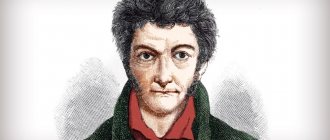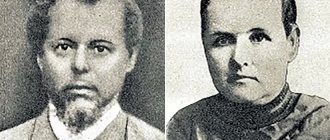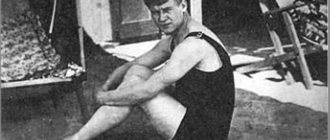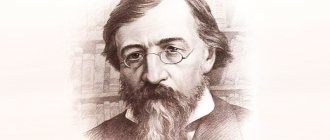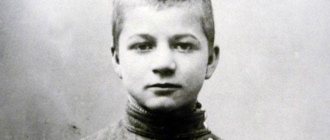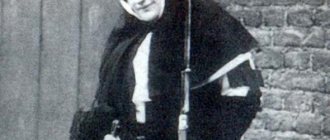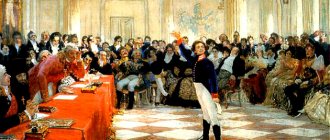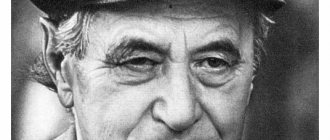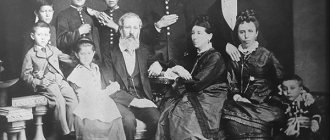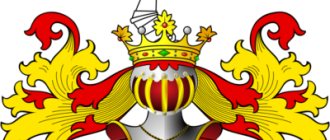The beginning of the way
Jacob Ludwig Karl (born January 4, 1785, Hanau) and Wilhelm Karl (February 24, 1786, Kassel) were born in Germany, which determined the nationality of the Brothers Grimm. There were six children in a large family, among whom there was only one sister, and the future writers turned out to be the eldest. Their father, Philipp Wilhelm, worked first as a clerk in the Hanau bar, then as a judicial official in the city of Steinau. Together with the writers' grandfather, he was a minister of the Calvinist Reformed Church.
After graduating from the Kassel school, the brothers, following in their father’s footsteps, began studying law at the University of Marburg (1802−1806). Here they met outstanding representatives of science of their time, who had a decisive influence on life principles, creativity and choice of profession:
- Brilliant German writer, poet and teacher Clemens Brentano de la Roche.
- One of the founders of the historical school of jurisprudence, Friedrich Karl von Savigny.
- Philosopher Johann Gottfried Herder studied folk poetry.
In 1805, Jacob accompanied Savigny to Paris to conduct legal research related to medieval manuscripts. The following year he served as secretary of the military administration in Kassel, and during the period of the invasion of Napoleon's troops he became the private librarian of King Jerome in Westphalia.
After the defeat of the French army, J. Grimm returned to Hesse and periodically traveled to Paris with the aim of returning precious books and paintings taken by the invaders. He also took part in the Congress of Vienna, which took place in the post-war years. Meanwhile, due to poor health, Wilhelm remained unemployed for a long time and only in 1814 received a position as a secretary in the library of the Elector of Kassel. Two years later he joined Jacob.
The Wonderful Casket (biography and work of the Brothers Grimm)
Vl. Sashonko
In the mid-40s of the last century, the famous writer and tireless traveler Hans Christian Andersen, making another trip to Europe, stopped in Berlin. At that time he was at the zenith of his fame. His fairy tales for children, translated into many languages, were published in large editions. While in Berlin, Andersen decided to visit the Brothers Grimm. He headed towards them without prior notice. “If anyone knows me in Berlin,” Andersen thought, “it’s them!” The maid opened the door. -Which of the two brothers does the master want to see? – she asked. “The one who wrote more,” Andersen answered cheerfully. “We have a particularly learned scientist, Herr Jacob,” the maid said confidentially and led the guest to the elder Grimm’s chambers. Alas, the first meeting of the two famous storytellers did not bring joy to either one or the other. Jacob Grimm, surprised and a little confused, admitted that he had not heard anything about his unexpected guest. Andersen listed his novels and fairy tales in vain. Grimm, increasingly embarrassed, just shook his head. - Fathers, what will you think of me now?! – Andersen exclaimed in despair. “I come, uninvited and unknown, and I myself begin to list my compositions on my fingers!” Horror! No, it still can’t be that you haven’t heard about me! A collection of fairy tales from different nations was recently released in Denmark, which is dedicated to you. It also contains my fairy tales. Jacob Grimm, smiling sadly, spread his hands: “It’s quite possible.” Only I don’t know this collection. Unfortunately, I didn't read it. But it still gives me great joy to meet you. Can I take you to my brother Wilhelm? “No, no, thank you...” Stung and offended, Andersen hastily took his leave. His disappointment was easy to understand. And although at the end of the same month Jacob Grimm, having arrived in Copenhagen, will pay him a return visit, and at subsequent meetings Andersen and the Grimm brothers will behave like good old acquaintances, the bitterness from the first unsuccessful meeting will still remain in the Dane’s heart for a long time. And the Brothers Grimm had their own reasons for this: they knew nothing about Andersen, and the reasons, as they say, were quite valid: they were absorbed in work so enormous in volume and so labor-intensive that it took all their time and all their strength and energy. The Brothers Grimm were not only writers, but also major scientists, academicians, university professors, and public figures. You might be surprised by this? Indeed, in the minds of many, the Brothers Grimm are the authors of “Mistress Blizzard”, “Rapunzel”, “Sleeping Beauty”, “Bremen Street Musicians”, “Tom Thumb”, “The Brave Little Tailor” and two hundred other fairy tales, and that’s all. But whoever thinks so is mistaken. The Brothers Grimm were born in the small German town of Hanau, near Frankfurt am Main: Jacob in 1785, and Wilhelm in 1786. Germany was not yet a single state and consisted of many kingdoms, duchies, and principalities. Hanau was part of the Principality of Hesse. Jacob and Wilhelm's father was a judicial official. Jacob and Wilhelm, being almost the same age, grew up together and were very friendly. They slept in the same bed, were dressed identically, both were fond of collecting butterflies and plants, and could spend hours following the habits of animals and insects. The boys loved nature dearly. But after graduating from the Lyceum, they entered the Faculty of Law at the University of Marburg. A young, talented professor, Friedrich Karl von Savigny, was giving lectures there at the time, for whom the Grimm brothers immediately felt great sympathy. And the professor, in turn, saw in the brother students talent, thoughtfulness, and love of science. He introduced them to serious research work, interested them in the history of Germany, the folklore riches of the German people - their fairy tales, traditions, legends, songs. At the same time, the Grimm brothers became friends with Clemens Brentano, a relative of Professor Savigny. Brentano collected German folk songs. Jacob and Wilhelm enthusiastically began to help him. In 1806, this collection, called by the compilers “The Wonderful Horn of a Boy,” was published. Almost immediately after graduating from university, the Grimm brothers began, now completely independently, to collect German folklore, and above all, folk tales. In 1811, the Grimm brothers published their first scientific works, and a year later the first book of “Children's and Family Fairy Tales,” collected, recorded and prepared for publication by the Grimm brothers, was published. Three years later the second one came out. Jacob and Wilhelm Grimm collected fairy tales very painstakingly and persistently, recording them with the greatest accuracy in order to convey their imagery, their rich language. They forced all their friends and relatives to tell the fairy tales they knew, and got acquainted with old men and women from the common people - the main keepers of folklore treasures. At least a fourth of the tales for the first book (and there were 86 of them in total) were written down by the Brothers Grimm from the words of Maria Müller (“old Maria”), a buyer of medicinal herbs and potions from the Wilda pharmacy in the city of Kassel. And when working on the second book, Dorothea Wichman played an equally important role: 21 fairy tales were written down from her words. Sometimes I had to get fairy tales... through exchange. Yes Yes! Exchange them for... your old, worn clothes. Dragoon sergeant Johann Krause “gave in” to the Brothers Grimm half a dozen fairy tales that he kept in his head for precisely this payment. In addition to fairy tales, the Grimm brothers also prepared for publication such monuments of folk art as “Poor Heinrich” and “Songs of the Old Edda”, “German Sagas” and “Reinecke the Fox”, “The Song of Roland”, translated into German some folklore works of neighboring peoples (Danes, Scots, Irish). Usually Jacob and Wilhelm worked together, but they also have works written by each of the brothers separately. The first scientifically systematized “German Grammar” by Jacob Grimm, the first in the history of Germany, was of great importance for the development of the German literary language. It is no coincidence that contemporaries called the year of its publication – 1819 – “the year of the birth of German philology.” Another work of Jacob Grimm, “Monuments of German Antiquity”, containing more than a thousand pages, was also of great value. It collected unique materials depicting the morals, beliefs, habits, language, and legal relationships of the ancient Germans and Germans. Until now, it is a reference book for every German philologist. At the same time, Wilhelm Grimm published a major scientific study. It was called: “German Heroic Tales.” At the end of the 30s of the 19th century, when the Grimm brothers moved to Berlin, the capital of the Kingdom of Prussia, Jacob and Wilhelm began work, the volume of which was truly colossal and which they continued until their deaths. This was the compilation of a multi-volume “German Dictionary”. Nowadays, such work is usually carried out by hundreds of researchers who also have extensive supporting material and previously published publications. But then everything was different. In those same years, a wonderful collector of Russian proverbs, songs, and fairy tales, Vladimir Ivanovich Dal, walked around Russia. He devoted more than half a century of his life to compiling the “Explanatory Dictionary of the Living Great Russian Language.” About two hundred thousand words Dahl collected into his pages, and eighty thousand of them were written down and explained by himself. About thirty thousand proverbs and sayings, many lines from the works of Russian writers and poets are scattered on the pages of the dictionary. After all, every word had to be explained, interpreted! Now on the shelves of our writers and scientists you can find these huge four volumes of an amazing dictionary. And all this was done by Vladimir Dal alone! Jacob and Wilhelm also started from scratch. In their native German language, they were the same pioneers who took on what seemed to be a task that was beyond the strength of two people. After all, what does it mean to prepare material for an explanatory dictionary? This means making thousands, tens of thousands of cards for each word-term - tens of thousands of these unique passports. And in each of them, enter all the meanings, variants and possible uses of the word, illustrating this with examples from literary sources... Now it will not be difficult for you to understand why the famous storytellers the Brothers Grimm, completely absorbed in this gigantic work, did not promptly notice the appearance of a new thing in literature brilliant name - the Danish storyteller Hans Christian Andersen. “Every day I sit at my desk for at least twelve hours straight, and I also want to remind you that whoever does this will soon be sixty-eight years old,” Jacob Grimm wrote to an acquaintance. The Brothers Grimm have a very small fairy tale - just two paragraphs - called “The Golden Key”. She completes the collections of Grimm's fairy tales, listed there as No. 300. It tells how one poor boy, going into the forest for brushwood, found a small golden key. “He thought that since there was a key, there should be a lock for it, so he began to dig in the ground and found an iron casket.” So the brothers Grimm also found their golden key, with which they opened the precious casket of folk wisdom and folk art for everyone. A casket full of fairy tales, poetic legends and traditions. “The boy turned the key once, and now you guys need to wait until he completely opens the lock and lifts the lid, and then we will find out what kind of wonderful things were in this casket.” This is how the fairy tale “The Golden Key” ends. This is how I will end my story about the Brothers Grimm, but with one small amendment: you guys don’t have to wait. At least now lift the lids of the casket, because it has been open for a long time. And then you will see for yourself what wonderful things lie in it.
Keepers of Fairy Tales
By this time the brothers had definitely given up on pursuing legal careers in favor of literary and linguistic studies. In the following years, they work diligently and steadily, laying the foundation for further success. Their views largely stem from the social and political changes of their time, corresponding to the challenges of the era.
Jacob and Wilhelm did not succumb to the influence of the then fashionable “Gothic” romanticism, but, exploring the distant past, they discovered the traditions of oral folk art that laid the social foundation of society. They made great efforts to preserve the rich heritage of European mythology, including legends from Scandinavia, Spain, England, Serbia, the Netherlands and other countries in their works.
The brothers collected the first fairy tales for friends and like-minded people Brentano and Achim von Arnim, who by that time had already published a collection of folk lyrics. In addition, during this period, writers wrote critical essays about folklore, which, in their opinion, is the only expression of the eternal joys, sorrows, hopes and fears of humanity.
Encouraged by their success, Jacob and Wilhelm published a collection of “Children's and Household Tales,” implying that these stories were also intended for adults . In contrast to the extravagant romantic fantasy and poetic myths of the 19th century, the 86 stories in this collection (including Snow White, Little Red Riding Hood and Sleeping Beauty) are based on authentic folk art.
Most of the stories were taken from oral sources, and the merit of the authors is that they wrote fairy tales in a simple, readable form, without changing the original folklore character. The result exceeded all expectations: the collection was extremely popular and quickly sold out in Germany and beyond. In 1814, the publication expanded and, with additions, consisted of 156 fairy tales.
Another of the brothers, the artist and engraver Ludwig Emil, was directly involved in this work. He was a master illustrator who created magnificent drawings for publications, but was usually overshadowed by his famous relatives.
Scientists were among the first researchers who raised a whole layer of folk culture, so it is not surprising that at first they did not have to go far. Neighbors and acquaintances generously shared magical stories: the pharmacist's wife Frau Wild, the housekeeper Maria Müller and others. This is how the images appeared and portraits of the heroes of the fairy tales of the Brothers Grimm were formed, the list of which includes the following famous works:
- Golden goose.
- Puss in Boots.
- Bremen street musicians.
- Rapunzel.
- King Thrushbeard.
- Thumb Boy.
- Satchel, hat and horn.
- Mrs. Metelitsa.
- Death in godfathers.
- Brave tailor.
- Belyanochka and Rosette.
Only for the beautiful fairy tales, even a brief summary of which takes up more than one page, the work of writers could be called the greatest contribution to world culture, which laid the foundation for modern folklore. In addition, they did a great deal of work in the field of historical linguistics and Germanic philology, becoming outstanding scientists of their time.
Literary activity
The Brothers Grimm were so passionate about literature that they decided to make it their life's work. Interestingly, their wonderful tales were only a small part of the impressive amount of work that the brothers did in the field of linguistics and literature.
From early childhood, Jacob and Wilhelm were so friendly that they decided to study ancient German folklore together. Being Germans by nationality, they set a goal to properly study German folk art, systematize it, and thereby contribute to the development of their beloved country. The brothers began to collect, process and record many folk legends and fairy tales that were passed down from generation to generation. In this difficult work, the brothers were helped by many residents of Kassel, who knew countless ancient stories.
In 1812, the brothers had their first success: they published a collection of Children's and Family Tales, which included about a hundred works. Immediately after its publication, Grimm began working on material for the second book, which was published in 1815. Among the most popular fairy tales of the Brothers Grimm are The Town Musicians of Bremen, Snow White and the Seven Dwarfs, King Thrushbeard, The Wolf and the Seven Little Goats, Cinderella and many others.
Göttingen years
The quiet life in Kassel ended, and for several years the brothers went their separate ways. Wilhelm focused on the study of medieval traditions, while Jacob specialized in philology, history and grammar of the German language. In 1829 they began working together again at the University of Göttingen. The official duties of librarians and teachers were successfully combined with research.
Here Jacob completed his work on the publication of the book “German Mythology,” which was of great importance for European culture. By studying collected poems, tales and other folkloric elements, he traced the pre-Christian beliefs and superstitions of the Germanic peoples in comparison with classical mythology and Christianity.
The work had many imitators and followers, but not everyone was as careful in their judgments as the author. Wilhelm at this time published an extraordinary edition of epigrams by poets of the 13th century. The situation changed when the Duke of Cumberland became the ruler of Hanover. He unceremoniously annulled the 1833 constitution, and the Grimms, along with five other professors, sent a protest. Dismissal followed immediately with an order to leave the kingdom.
Berlin period
In 1840, the brothers accepted the invitation of the King of Prussia, Frederick William IV, and went to Berlin, where they lectured at the university as members of the Royal Academy of Sciences. Here they began active work on the most ambitious project of their lives - a large German dictionary intended for the study of written and spoken language, as well as scientific and reference work.
The publication contained all known German literary words with their historical variants, features, etymology, semantic development, as well as use in everyday and specialized speech. The book was supplied with illustrations and references to idioms and proverbs. The great work, begun in 1838 as a source of income, was completed by other scientists more than a century later.
The dictionary turned out to be an example for similar publications in different countries. Philological research led Jacob to a work on the history of the German language, in which he attempted to combine this discipline with the study of early history. He was fascinated by research into names and dialects, as well as ways of writing words.
In Berlin, the brothers witnessed the revolution of 1848 and took an active part in the political strife of subsequent years. Despite their differences in beliefs, they maintained friendly relations with colleagues at home and abroad. Almost all European academies were proud to have writers among their members.
Wilhelm arranged his personal life by marrying Dorothea Wild from Kassel. The marriage produced four sons, one of whom became a writer and art historian. The brothers continued to teach and work on the dictionary, but on December 16, 1859, Wilhelm unexpectedly died from a transient infection, interrupting his work on a group of words starting with the letter D.
Jacob, who remained a bachelor, took care of his family. He continued to work until his last breath and died on September 20, 1863 from a stroke. Death found the scientist at his desk, stopping his hand on the description of the word “frucht” (fruit).
Don't spill the water
For many years, the Grimm brothers continued their scientific activities with incredible zeal. Taught by bitter experience, they tried not to attach much importance to external circumstances. “We, as wanderers, experienced one after another rain, storm, sunny days, and when the clouds covered the mountains, we were still sure that the sun was shining above them; and when it rises, it is in God’s hands. And we continue to work; and there is no better work in this life than ours,” Wilhelm wrote to his friend in 1813, when the Allied troops were already approaching Leipzig.
Article on the topic
Hans Christian Andersen: The Little Match Girl
Today, only specialists know about the real contribution of the Brothers Grimm to science. Only they can evaluate the efficiency of the brothers, who together were more useful than an entire university of linguists. In 1819, the first part of the four-volume “German Grammar” appeared, which created a sensation in the scientific community. It took Jacob Grimm more than 20 years to create this colossal work—it became the basis for subsequent research into Germanic languages. In 1830, the brothers moved together to Göttingen, where hand in hand they worked in the library and taught at the university. In 1837, the Grimm brothers became part of the "Göttingen Seven" - professors who protested against the abolition of the constitution, which was initiated by the new king Ernst August . As a result of this scandal, Jacob was fired and expelled from Göttingen, the brothers first returned home to Kassel, and after some time moved to Berlin, where they lived until the end of their lives in the same house, working on the “Dictionary of the German Language”, research in the field of law and linguistics, as well as reprinting and adding to their tales.
Brothers Grimm. Photo: www.globallookpress.com
On December 16, 1859, Wilhelm died, leaving his brother alone with work. Jacob continued to live and work in the same apartment with his widow and nephews, to whom he was very attached. Jacob Grimm survived his brother by four years and died in the summer of 1863, just before his death he wished to look at Wilhelm’s photograph for the last time. World-famous storytellers are buried nearby in St. Matthew's cemetery in Berlin.
Heritage in modern Germany
The brothers are among the most important personalities in the cultural history of Germany and Europe. Their “Children's and Household Tales” over the past two centuries have been published in millions of copies and translated into 160 languages on all continents of the world, and in Germany they are revered on a par with the famous German book by Martin Luther.
In addition, Jacob and Wilhelm are considered the fathers of German studies for their fundamental research in the history of the national language. With their "German Dictionary" they initiated the largest lexicographical project in the history of the country, which was completed in 1971, 119 years after the first publication.
Modern Germany carefully preserves the cultural heritage of the Brothers Grimm. Interesting facts from their life and biography, as well as multifaceted creativity attract tourists from all over the country and the world:
- In the homeland of scientists, Hanau hosts an annual fairy tale festival. Over the past few years, the number of its visitors has exceeded 80 thousand people, and its international popularity is so great that the Japanese sister city of Tottori holds fairy tale performances in its own language. Moreover, Hanau authorities have applied for permission to add the official name "City of the Brothers Grimm" to the municipality. Unfortunately, historical sites associated with the writers were destroyed during World War II.
- Steinau has a tourism program that introduces visitors to the city to the family home and buildings that the brothers visited as children and later described in their memoirs. The office building where their father served as a bailiff has been preserved. Currently, the brothers' home houses a permanent exhibition located in 20 rooms. The young years and international significance of the work of storytellers are presented here. Visitors are offered quests based on works and thematic puppet theater performances.
- The Marburg State Archives holds the brothers' letters, manuscripts and property. The city regularly hosts concerts, lectures, exhibitions and other events dedicated to disseminating information about early German romanticism, as well as readings of fairy tales by Wilhelm and Jacob Grimm.
- The museum in Kassel contains more than 100 thousand exhibits and studies the life and work of writers. Authentic sites associated with the brothers' activities have been preserved here. Since 1897, the city has been the seat of the Brothers Grimm Society and offers a wealth of evidence. The most famous document in the world is considered to be a copy of "Children's and Household Tales", officially recognized by UNESCO as a world heritage of the past. Thanks to numerous funds, donations and acquisitions, the local museum's collections have become a center for international research into the work of writers.
A professorship has been created at the University of Marburg to scientifically evaluate the brothers' achievements. The state of Hesse has established the Grimm Prize, which is awarded once every two years for special achievements in disciplines related to the activities of Wilhelm and Jacob:
- philology;
- folkloristics;
- story;
- jurisprudence.
The names of the writers of the Brothers Grimm are forever inscribed in the history of world literature. Their scientific works made a huge contribution to the development of German and European linguistics, and wonderful fairy tales not only convey to children and adults the wisdom of previous generations, but serve as inspiration for creating images of their characters in films and on the theater stage.
Thanks aunties
On January 4, 1785, a son, Jacob, was born into the family of lawyer Philip Wilhelm Grimm and his wife Dorothea Wilhelm was born . The family lived in the small town of Hanau in the German region of Hesse. The brothers lived amicably, did not dare to contradict their father, willingly helped their mother and often visited their paternal aunt, the childless widow Schlemmer , who taught her nephews to read and write.
A few years later, the head of the family was appointed governor and judge of the neighboring city of Steinau - where the Grimm brothers spent several happy years. For the rest of their lives, narrow streets, a magically beautiful garden with apple trees, a large old bell and the stone building of the town hall, next to which their beloved teacher Tsinkhan . By that time, the Grimm family had been replenished with three more brothers and a lovely sister. And everyone would live happily ever after - but this is not a fairy tale, but a real biography.
Jacob Grimm. Photo: www.globallookpress.com
Jacob was 11 years old when his father died, leaving six children and an inconsolable widow. A few months later, Aunt Schlemmer, who helped Dorothea cope with the kids, also died. Reluctantly, Mother Grimm decided to send her eldest sons to study in Kassel, where her sister lived - Aunt Henrietta with a kind heart, to whom Jacob wrote an ode of gratitude a couple of years later:
There, there, to the heavenly bright spheres, I offer a speech of gratitude About the nobility of the heart, the passion of faith Plus thrift, whose good is worth the candle. My prayer, which is mixed with joy, will be heard by the one who is our Father in heaven. And your kindness will be rewarded with a blessing - here, and there - a crown.
Having tasted the air of freedom, the brothers, however, did not abuse it and diligently attended all classes, and were so successful in their studies that they graduated from the gymnasium in four years instead of the usual seven. In their free time from lessons, the brothers practiced drawing, walked with their peers, or wrote out interesting fragments from the books they liked in special notebooks - such a “non-childish” hobby can be considered the beginning of the brothers’ scientific activity.
"Mistress Blizzard." Fairy tale of the Brothers Grimm
Read more
